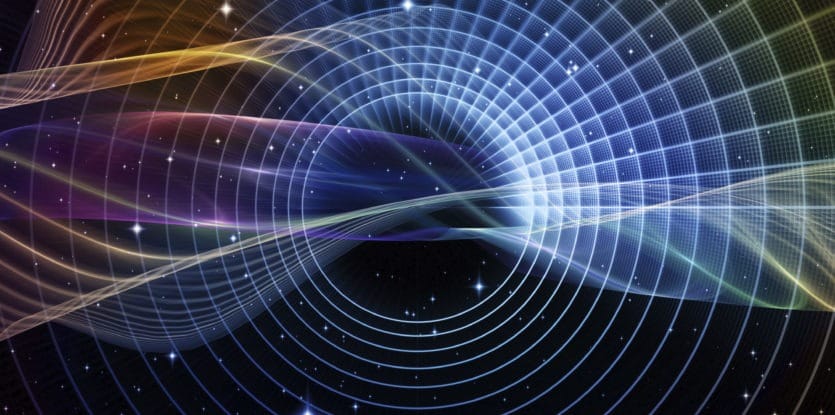The substance of time is motion and change: a static world would also be a timeless world. Nevertheless, time, as forged by its Creator, follows a seven-day cycle, consisting of six days of work (i.e. development, transformation, change), and a seventh day of rest. But how can a unit of time be defined as a day of rest, the very antithesis of time?
The Circle
Time and space are closely related to each other; indeed, modern physics is wont to combine the two as “spacetime,” a four-dimensional grid against which all physical objects and events are measured. While time is the more abstract of the two, many of the characteristics of space are attributed to time as well: we speak of a “point” in time, a “stretch” of time, time “cycles,” even of the “condensation” or “fanning out” of time.[1] Indeed, many of time’s complexities can be better understood when we apply the space-quantifying models of geometry to our conception of time.
One such model is the circle, long considered the most perfect of spatial shapes. The circle’s primary features are: the center, the point from which the circle’s area extends uniformly in all directions; the radius, which is the distance from the circle’s center to its outer limit; and the circumference, the circle’s outer rim, which contains the area of the circle within it. The circumference is (approximately[2]) six times the length of the radius. This is true of all circles, regardless of size: the greater the radius, the greater the area of the circle, and thus the greater the circumference that encloses this area; but the proportion always remains the same—each additional inch (or yard or mile) of radius will translate into (slightly more than) six additional inches (or yards or miles) of circumference.
The geometric point possesses no area; as such, it would seem, it hardly qualifies as a component of space. In truth, of course, the very opposite is true: the point is the most basic component of all geometric forms—every line is defined by the points that mark its beginning, end, center, convergence with other lines, etc.; and every area is defined by the lines that frame it. Indeed, it is precisely because the point possesses no area itself that it can define and quantify the areas that relate to it.
This is exemplified by the circle’s center. A “mere” point, the center occupies none of the circle’s area; but it is precisely the center that makes the circle a circle. The radius extends from it, the diameter turns on it, the circumference is drawn in relation to it—virtually every feature and characteristic of the circle is derived from the point upon which it is centered.
To understand the week–the 7-day cycle which the Creator stamped into the very fabric of time–we must envision it as a circle. The exterior surface of this circle (its “circumference”) is the six work days—days that are tracts of time, expanses of progression and change. The center of the circle is Shabbat. Shabbat is a timeless point in time, an island of tranquility in a sea of flux. Yet despite–indeed, because of–its “timelessness,” Shabbat is the axis upon which the most basic of time-cycles, the week, turns.
For Shabbat is the day that embodies the purpose and end-goal of time—the objective of all the work, development and change in our restless existence. On Shabbat, our efforts of the past six workdays translate into a holier and more G-dly world, a world brought that much closer to the harmonious perfection that G-d imbued in creation and charged us to develop. One day a week, we penetrate below the whirling surface of time to experience its tranquil core. One day a week, we enjoy a “taste of the world to come,” a taste of an age that is “wholly Shabbat and rest, for everlasting life”—the eternal Shabbat of Moshiach that we are striving towards. And it is this weekly taste of tranquil perfection that supplies us with the vision and fortitude to grapple with and transform the still imperfect world we return to during the six workdays of the coming week.
Shabbat, then, is both the source and the goal of the six days of “conventional” time that form the surface of the weekly cycle. It is thus the very essence of time, precisely because it is devoid of the motion and flux which characterize time—in the same way that the area of the circle derives from and is defined by its center-point, precisely because of the center’s own arealessness.
The Ratio
In the circle of time, the distance from center to surface is multiplied six-fold, resulting in a “circumference” that is six times the “radius”: six workdays result of the journey from the tranquil center of the week to its whirling. For life is a six-dimensional affair, reflecting the six divine attributes (sefirot) that G-d invested in His creation. Thus we have six days of creation, with Shabbat as its “timeless” core; we have the six directions of space, and the area less center from which they extend; we have the six basic attributes of the heart (attraction, rejection, synthesis, competitiveness, devotion and comunicativity[3]), and the seventh attribute, malchut (“receptiveness”), which, while “possessing no qualities of its own” is the focal point and implementer of them all. The entirety of existence is comprised of these six basic elements, coloring every endeavor and experience with the six basic hues of reality.
Another law of circle geometry is that the greater the radius, the greater the circumference. The same is true of the circle of time. The further we depart from its timeless center, the more “body” time has: the more turbulent it is, the more at odds with the “Shabbat” at its core.
But no matter how great the surface flux of our life, it is inexorably bound to the tranquil axis, deriving from it and tending to it. Ultimately, the most tumultuous periods of our lives are generated by its quintessential purpose and serve its harmonious end.
Based on an entry in the Rebbe’s journal[4]
Adapted from the teachings of the Rebbe by Yanki Tauber
[1] See Derech Mitzvotecha, 59a: “In the chambers of Yetzirah (a spiritual world which precedes our physical universe in the ‘chain of evolution’ from spirit to matter which G-d employed in His creation), fifteen years (of ‘our’ time) are included in a single glance.”
[2] The exact figure has yet to be calculated; mathematicians today believe that the ratio of a circle’s circumference to its diameter (a circle’s diameter is its width from end to end, or a line exactly double its radius) is an endless string of numbers that begins 3.14….. (represented by the symbol Ð (pi)). According to this, the circumference of a circle is within a hundredth part of 6.28 times its radius.
Halachically, the Talmud (Eruvin 13b) rules that “[a circle] whose circumference is three tefachim, has a width of one tefach.” Maimonides, in his commentary on the Mishnah (ibid.), explains: “Know, that the ratio of a circle’s diameter to its circumference is not known and can never be expressed absolutely. This lack of knowledge is not due to our [ignorance]… for this thing is, in essence, unknowable. It can, however, be known approximately… the closest figure [that has been arrived at] is approximately three and one seventh. Since the exact figure cannot be known, [the Talmud] adapts a round figure, ruling that, regarding all measurements required by the Torah, “that which has a circumference of three tefachim, has a diameter of one tefach.”
[3] As one of many possible translations of the kabbalistic terms chessed, gevurah, tiferet, netzach, hod and yesod would have it.
[4] Reshimot #3 pp. 46-47.








I quote from the article: Time and space are closely related to each other; indeed, modern physics is wont to combine the two as “spacetime,” a four-dimensional grid against which all physical objects and events are measured.
I disagree. Einsteins theory of general relativity, the theory you quote directly, refutes this view of space and time. Einsteins argument states that all motion is described as relative to each other. For instance, two stars A and B orbiting each other in space are described as A moving relative to B or B moving relative to A, according to relativity. The way you tried to describe spacetime, as a grid that you can use to compare the movement of both A and B relative to this imaginary grid over a time of t is not compatible with the observations tested in real life. If this were not true, then fancy devices such as gps wouldnt be able to pinpoint you on a road as you drive.
Please correct your article so the people who read your site can at least have the first thing about general relativity correct. I appreciate your time. Dont bother posting this comment, just correct it.